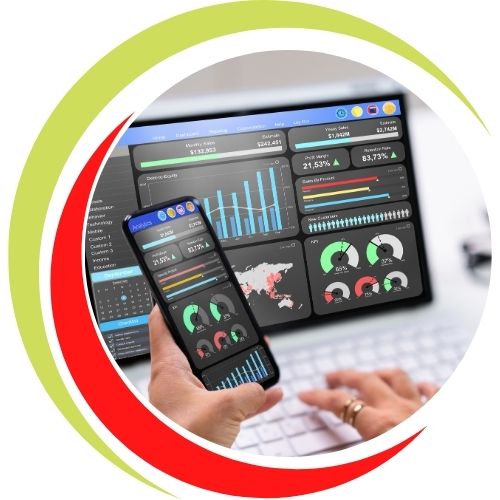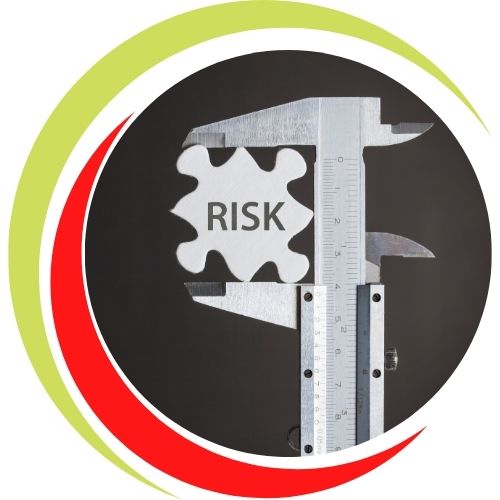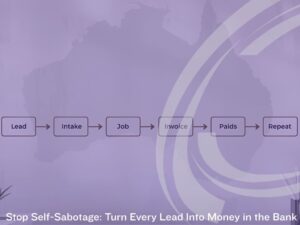Risk-Proof Your Board: The Australian Playbook For A Volatile Decade
Why board risk preparedness must be your top agenda item
Shocks are now frequent, fast and messy. Climate events, cyber incidents and demand swings compound each other. Markets move before management meetings end. In this climate, board risk preparedness is not a compliance chore. It is your growth insurance and your recovery speed. The boards that invest early decide faster and bounce back stronger. They also keep the confidence of customers, employees and lenders.
The action case is clear in Australia. Small businesses make up more than 97% of all firms, which means system resilience depends on how well these firms handle risk. A single disruption can ripple through supply chains and communities. Good board risk preparedness limits that ripple and preserve choice when conditions turn.
Boards also set the tone. When directors ask better risk questions, managers plan earlier. That shift reduces firefighting and creates time for growth moves. Board risk preparedness, therefore, pays off twice, first in shock prevention, then in faster strategy execution.
What board risk preparedness means in practice
Board risk preparedness is a disciplined way to spot, size and shape responses to high-impact risks. It is broader than a risk register. It blends scenario planning, leading indicators, capital buffers and rapid decision rights. It anchors risk appetite to strategy. It also improves how information flows to directors. Board risk preparedness will make your next hard call simpler and quicker if done well.
For large enterprises, this lives in the board calendar and committee work. For mid-market firms and fast-growing SMEs, an advisory board can drive the same focus. You may not have a chief risk officer. You can still achieve board-level risk preparedness through clear roles, short cycles and outside expertise.
The predictable surprises boards must prioritise
High-consequence, low-likelihood events cause the deepest damage. They also give little time to react. That is why effective boards hunt for predictable surprises. These are events that would strike at your core value proposition. Use a simple grid to differentiate risks by scope and certainty. Pick the few scenarios that deserve board time each quarter.
Typical Australian predictable surprises include the following:
- Severe-weather events and infrastructure outages that halt production or logistics. Insured catastrophe losses alone reached billions in recent seasons. Board risk preparedness must consider physical sites, people and suppliers.
- Credential-phishing and data breaches that disrupt operations and erode trust. These incidents continue to dominate regulatory reports. Board-level cyber preparedness needs playbooks, drills and vendor controls.
- Fraud and scams that drain cash and hijack channels. Attackers target small business processes and brand trust. Board risk preparedness should harden approvals and educate teams.
Financial tightening or sharp rate moves that stress cash and covenant headroom. Strong board risk preparedness builds buffers and pre-arranged options.

Australia’s risk backdrop, in brief
Australia’s economic pulse is steadying as rates ease and hiring holds up. Yet cost pressure remains uneven across sectors. Directors should expect inflation, labour gaps and weather-driven disruptions to keep risk high. SMEs report improving confidence, although profitability and employment conditions still lag. This is a classic setup for surprise shocks and rapid pivots. Board risk preparedness is, therefore, a practical edge in the year ahead.
The small-business share of the economy means localised events scale quickly. A data breach at a regional supplier can halt production for a listed customer. A flood that closes one highway can strand inventory across states. With 97.2% of Australian businesses classified as small, board risk preparedness at scale is a national resilience lever.
A 90-day board risk preparedness sprint
You can lift board-level readiness in three short cycles. Keep meetings short. Keep decisions concrete.
Weeks 1 to 4: define the risk frame
- Confirm strategy anchors and risk appetite, in plain language.
- Pick four predictable surprise scenarios to explore.
- Agree on impact thresholds that would force action.
- Assign owners for each scenario and define decision rights.
This sets a common language for board risk preparedness and avoids drift.
Weeks 5 to 8, pressure-test the operating model
- Run two premortems. Imagine a failed quarter. Work back to root causes.
- Map single points of failure across people, sites, systems and suppliers.
- Test liquidity headroom under each scenario. Include covenant and insurance checks.
- Identify no-regret moves that cut exposure without heavy spend.
This makes board risk preparedness tangible. It links scenarios to real constraints.
Weeks 9 to 12, lock triggers and playbooks
- Set leading indicators and traffic-light triggers for each scenario.
- Build two decision trees. One for cyber extortion. One for site disruption.
- Pre-draft stakeholder messages for employees, customers and lenders.
- Schedule a 90-minute simulation with the whole leadership team.
Clear triggers and rehearsals shorten time to action. That is the heart of board risk preparedness.

Funding resilience without starving growth
Resilience is not just insurance. It is the capacity to keep investing when others pull back. Treat it as a portfolio of options.
- Liquidity buffers. Pre-arranged facilities and cash policies buy decision time.
- Insurance optimisation. Model cash outcomes with and without cover. Rebalance limits to match peak exposures, including severe-weather risks. Recent seasons underline the stakes for assets and logistics.
- Supplier diversification. Dual-source critical inputs and qualify alternates now.
- Technology hardening. Multi-factor authentication, privileged access control, and tested backups lower the breach’s impact. Australian breach data shows phishing and credential compromise as dominant entry points.
- People resilience. Cross-train critical roles. Build simple SOPs that new hires can use on day one.
Directors should view these choices as real options. Each small premium preserves a big future choice. This is smart board risk preparedness.
Make the information on the board action-ready
Many boards are drowned in thick papers. Important signals get lost. Fixing how information is written and presented is a high-return move. Use plain language. Limit sentences to 15 to 20 words. Keep paragraphs short. Highlight decisions and risks early. These practices raise comprehension, speed and inclusion. They also improve the audit trail of decisions.
Australian directors should embed an accessible writing standard into all board packs. The principles are simple. Make content relevant, findable, understandable and usable. Structure for scanning, with an inverted-pyramid layout. Avoid jargon. Use active voice. Replace long dashes with commas or full stops. These steps improve clarity for every reader and support assistive technologies. They also improve the quality of board risk preparedness by reducing noise during critical moments.
A fast board-paper template that supports board risk preparedness
- Purpose, one sentence.
- Decision required, one bullet list with options and recommendation.
- Risk and controls summary, one short paragraph.
- Leading indicators and triggers, one short table.
- Scenario impact, two or three bullets per scenario.
- Next steps, owner and deadline.
Keep appendices for details. This format helps directors grasp trade-offs quickly. It also creates a consistent record that improves accountability.
Culture, cadence and the human side of risk
A strong risk framework fails without the right culture. Encourage early signal-raising. Reward prevention, not just heroics after a crisis hits. Schedule short, regular review slots so risk never disappears from the agenda. Rotate outside voices into the room to challenge assumptions. These habits are cheap and powerful. They also anchor board risk preparedness in daily behaviour.
After any event, run a short post-mortem. Capture what worked, what failed and what to change. Use the session to check whether the board has the right mix of skills for the next cycle. Refresh as needed. Treat this as part of board risk preparedness, not a once-off review.
Board risk preparedness for enterprises of every size
Large and listed enterprises
- Run quarterly scenario sessions with a cross-functional team.
- Maintain a live risk dashboard with leading indicators and triggers.
- Align capital allocation to resilience options and strategic bets.
- Commission an independent cyber and insurance review each year.
Mid-market firms
- Use an advisory board to concentrate expertise.
- Map single points of failure in sites, systems and suppliers.
- Pre-agree crisis decision rights between owners, CEO and advisors.
- Share a one-page resilience plan with key lenders and insurers.
Small businesses and startups
- Keep it simple. Complete a one-evening premortem and a one-page plan.
- Turn on MFA, back up data and enforce payment controls.
- Build a basic cash buffer and a second supplier for critical inputs.
- Ask your accountant and broker to double-check insurance and liquidity.
In every case, board risk preparedness means fewer surprises and faster recovery. It also makes your business more attractive to employees, customers and financiers.
Premortems and drills, the board’s low-cost force multipliers
A premortem asks a simple question. It is three months from now, and we failed. Why. Teams then list causes and early signs. Boards learn where to invest and where to simplify. Pair premortems with short drills. Run a cyber tabletop for 60 minutes. Or simulate a warehouse outage. The point is practice under mild pressure. That builds muscle memory and confidence. This habit is central to board risk preparedness in Australia’s volatile setting.
Leading indicators that matter
Good indicators give you a week or a month of extra time. They turn a scramble into a plan. Start small.
- Operational. Supplier on-time-in-full, key site absenteeism, and backlog age.
- Financial. Daily cash balance, undrawn facilities, debtor stretch.
- Cyber. Phishing test failure rates, privileged access changes, and patch age.
- Customer. High-value churn intent, complaint spikes, and NPS drops.
- External. Severe-weather alerts near sites, scam alerts in your industry, policy statements that affect rates or credit.
Publish thresholds and actions. When an indicator flashes, you act. That discipline sits at the core of board risk preparedness.
Communicate risk so people can act
Crisis messages should be short, human and specific. Tell people what happened, what you are doing and what you want them to do. Avoid jargon. Avoid long paragraphs. Use plain language and clear layouts in staff notes, customer updates and lender briefings. Readability is operational. It removes delay and error when minutes matter. These communication standards belong inside every board risk preparedness playbook.

The cyber extortion decision tree
Every board needs a pre-agreed approach to cyber extortion. Emotions run high during an event. Decisions stall. A simple tree avoids paralysis.
- Is safety at risk or critical care affected, yes or no?
- Can we restore safely from clean backups within the agreed time, yes or no?
- Has data exfiltration occurred, yes or no?
- What law enforcement steps are required? List them.
- What are the legal and regulatory reporting triggers, list them.
- What pre-set criteria must be met before any payment is considered? List them.
This tool does not answer every case. It sets the floor for action and ethics. It is an essential element within board risk preparedness.
Supply chain stress: a practical checklist
- Map tier-one suppliers and the few tier-two dependencies that genuinely matter.
- Identify alternates and test small orders.
- Validate insurance for supplier failure and transit events.
- Pre-negotiate temporary logistics workarounds.
- Align safety stock to realistic lead times, not hope.
Severe-weather seasons and transport disruptions will remain part of Australian business life. Board risk preparedness treats logistics as a strategic asset, not a back-office cost.

How to measure progress in board risk preparedness
Track a small set of lagging and leading metrics.
Lagging
- Days to reopen after a site outage.
- Time from incident to customer notification.
- Cost to restore operations as a percentage of quarterly OPEX.
Leading
- Percentage of board papers using the standard template.
- Number of premortems and drills completed in the last quarter.
- Coverage ratio of critical single points of failure addressed.
- Response-time adherence to indicator triggers.
Report these signals each quarter. Tie them to incentives. Your goal is steady improvement and faster action.
Common traps that weaken board risk preparedness
- Over-indexing on likelihood and underweighting consequence. Treat existential risks as if they could happen tomorrow.
- Too many scenarios, which creates noise and no decisions.
- Thick board packs that bury the decision and the risk.
- Hero culture that praises late saves but ignores early warnings.
- No post-mortems, which repeat mistakes and miss skill gaps.
A simple year-round cadence
- Quarter 1, choose scenarios and run two premortems.
- Quarter 2, simulate cyber and severe weather.
- Quarter 3, review insurance, liquidity and supplier alternatives.
- Quarter 4, run a whole-of-business drill and a board post-mortem.
This rhythm keeps the organisation calm and ready. It also institutionalises board risk preparedness rather than treating it as a once-off project.
The payoff, faster recovery and better growth
Prepared firms reopen sooner after a flood, restore systems quicker after a breach and keep investing, while others pause. They deliver on promises and retain talent. Lenders trust them. Customers stay. The market notices. That is why board risk preparedness is a strategy lever, not a cost centre.
Australia’s economy rewards firms that can operate through disruption. Rates move, weather shifts, and scams evolve. The board that prepares today will make better calls tomorrow. That is the edge you can control.
Your next step
If you want a practical partner to structure and accelerate your board risk preparedness, we can help. Book an appointment to discuss your needs, or learn more about SBAAS and our approach at https://www.sbaas.com.au/about-us/.
Sources
The role of the board in preparing for extraordinary risk. https://www.mckinsey.com/business-functions/strategy-and-corporate-finance/our-insights/the-role-of-the-board-in-preparing-for-extraordinary-risk
Number of small businesses in Australia, ASBFEO Small Business Data Portal. https://www.asbfeo.gov.au/small-business-data-portal/number-small-businesses-australia
Insurance Catastrophe Resilience Report 2023–24, Insurance Council of Australia. https://insurancecouncil.com.au/resource/catastropheresiliencereport23-24/
Targeting scams: report of the National Anti-Scam Centre on scams data and activity 2024, ACCC. https://www.accc.gov.au/about-us/publications/serial-publications/targeting-scams-reports-on-scams-activity/targeting-scams-report-of-the-national-anti-scam-centre-on-scams-data-and-activity-2024
Targeting scams report, Scamwatch. https://www.scamwatch.gov.au/research-and-resources/targeting-scams-report
Notifiable Data Breaches Report, January to June 2024, OAIC. https://www.oaic.gov.au/privacy/notifiable-data-breaches/notifiable-data-breaches-publications/notifiable-data-breaches-report-january-to-june-2024
Statement by the Monetary Policy Board, 12 August 2025, Reserve Bank of Australia. https://www.rba.gov.au/media-releases/2025/mr-25-22.html
RBA cuts official interest rate in August 2025, ABC News. https://www.abc.net.au/news/2025-08-12/rba-cuts-official-interest-rate-at-august-meeting/105642434
NAB SME Business Survey, Quarter 1 2025. https://business.nab.com.au/nab-sme-business-survey-quarter-1-2025/
Scenario planning 101 for directors, Australian Institute of Company Directors. https://www.aicd.com.au/risk-management/framework/plan/scenario-planning-101-for-directors.html
Risk management, the board’s role, Australian Institute of Company Directors. https://www.aicd.com.au/risk-management.html

Eric Allgood is the Managing Director of SBAAS and brings over two decades of experience in corporate guidance, with a focus on governance and risk, crisis management, industrial relations, and sustainability.
He founded SBAAS in 2019 to extend his corporate strategies to small businesses, quickly becoming a vital support. His background in IR, governance and risk management, combined with his crisis management skills, has enabled businesses to navigate challenges effectively.
Eric’s commitment to sustainability shapes his approach to fostering inclusive and ethical practices within organisations. His strategic acumen and dedication to sustainable growth have positioned SBAAS as a leader in supporting small businesses through integrity and resilience.
Qualifications:
- Master of Business Law
- MBA (USA)
- Graduate Certificate of Business Administration
- Graduate Certificate of Training and Development
- Diploma of Psychology (University of Warwickshire)
- Bachelor of Applied Management
Memberships:
- Small Business Association of Australia –
International Think Tank Member and Sponsor - Australian Institute of Company Directors – MAICD
- Institute of Community Directors Australia – ICDA
- Australian Human Resource Institute – CAHRI
Our Consulting Services

Management Consulting
Compliance & Risk

Professional Writing Services
Consistency in Communication

Small Business Consulting
Sustainable Businesses

Start-ups
Set-up for Success
Further reading

Pragmatism Wins: How Australian Businesses Turn AI Hype Into Real Results
Australian organisations are moving beyond experiments. This article shows how Australian businesses across all sectors and sizes can scale value, manage risk, and boost productivity with pragmatic AI.

Stop Self-Sabotage: Turn Every Lead Into Money in the Bank
Winning work is hard. Losing time and cash to clunky admin is optional. This guide shows how to design an automated business process that captures leads, books jobs, issues invoices with timely reminders, and keeps clients returning. Plain English, practical steps, and a sharp focus on simplification, speed, and cash flow.

Seeing the Wrong Picture: What Most Business Owners Miss When Reviewing Their Performance
Business owners aren’t short on data, but many are missing what matters most. Discover what most business owners miss when reviewing their performance and how to shift from surface-level tracking to strategic insight.

Navigating Economic Uncertainty: A Roadmap for Australian Small Businesses
Discover how global economic shifts and local consumer sentiment are reshaping Australian small businesses. Equip yourself with actionable insights and strategies to thrive amidst uncertainty.

The Hidden Cost of Success: How Leadership Burnout is Crippling Australia’s Small Business Sector
Leadership burnout is rising fast across Australia’s small business sector. This article unpacks what it looks like, what causes it, and how SME leaders can protect themselves and their teams before the damage becomes irreversible.

From Centre to the Edges: A Practical Guide to the Political Left to Right Scale for Australian Business
We hear “far left” and “far right” every day. This guide starts in the middle, explains each step to the edges, and shows what the political left-to-right scale means for Australian enterprises of all sizes.
SBAAS Events
What our clients are saying about us
Posted onTrustindex verifies that the original source of the review is Google. Eric and Trudi recently wrote a tender for me and the experience was amazing. I went into the process in a state of complete overwhelm. Eric was able to break it down into achievable chunks for me, and reassure me that I had a great service and business model to offer. I came out the other end of the process with all of my business policies, a better understanding of my offer, and a foundation to launch all future tender applications. Eric took all of my information and turned it into a pretty package that I could market.Posted onTrustindex verifies that the original source of the review is Google. SBAAS were fantastic to work with on a detail-heavy tender with a tight turnaround. Their team helped us shape and compile our content to deliver a strong, high-quality submission. Highly recommend SBAAS to anyone looking for strategic support with tender development, with a touch of good humour along the way.Posted onTrustindex verifies that the original source of the review is Google. We engaged SBAAS to support the development of a complex government tender and couldn’t be happier with the outcome. SBAAS' professionalism, attention to detail, and ability to quickly understand our business and translate that into a compelling, well-structured submission were exceptional. They were responsive, collaborative, and a genuine extension of our team. Highly recommend for anyone looking for strategic, high-quality bid and tender writing support.Posted onTrustindex verifies that the original source of the review is Google. Eric and Team go above and beyond. They do an excellent job with researching to get everything that is legally required for Policies and QMS. Would recommend them them to everyone especially all the bookkeepers and accountants. Thank you guys, and extreme job. Love you work as always. 😀Posted onTrustindex verifies that the original source of the review is Google. Extremely professional and far exceeded by expectations. I will definitely be using their services again and highly recommend them. They have a spirit of excellence in everything they do which shines through when dealing with them.Posted onTrustindex verifies that the original source of the review is Google. Impressive consulting experience! The team is highly professional, with a hands-on approach that adds real value. Their dedication and expertise truly stand out. Highly recommended!Posted onTrustindex verifies that the original source of the review is Google. Super knowledgable company that provides great advice and support for small business. Super friendly, highly recommend.Posted onTrustindex verifies that the original source of the review is Google. As a new business owner, I recognised the value in seeking a business coach to help me achieve significant goals. After a disappointing experience with a previous coach, I was initially hesitant to try again. However, after seeing SBAAS's complimentary action plan, I thought there was no harm in investigating. Eric quickly identified gaps in my systems, and through a few targeted adjustments, I saw an immediate increase in both leads and sales. These changes also improved profitability—highlighting a major issue I hadn’t been aware of, as my previous coach’s guidance had me working for less than $7 per hour! I look forward to continuing working with Eric.
